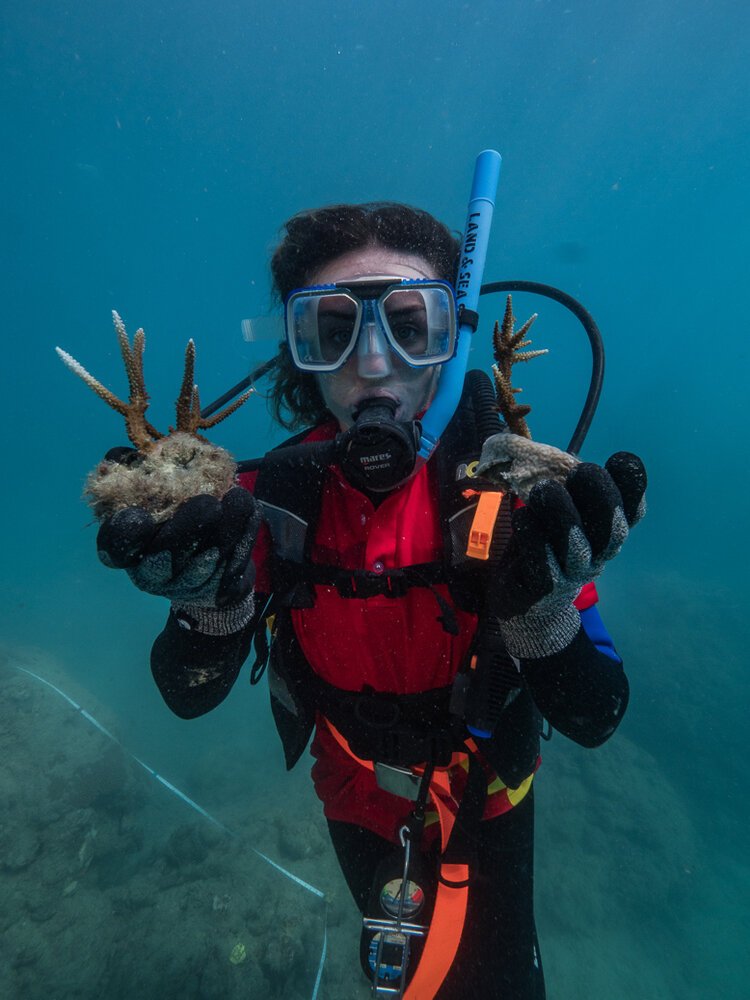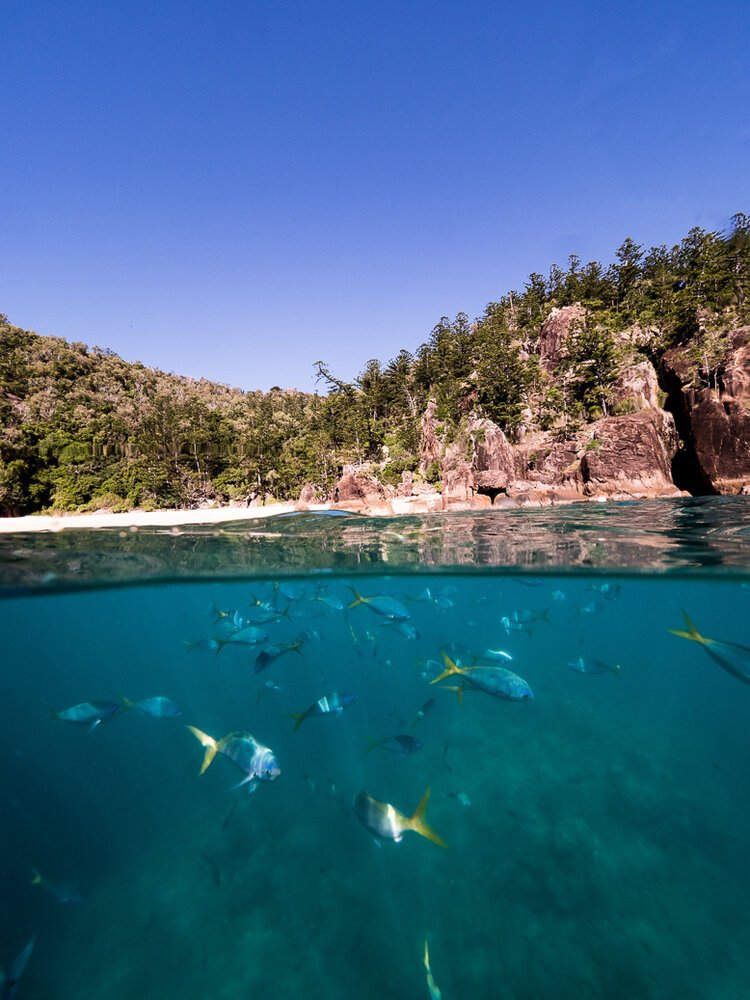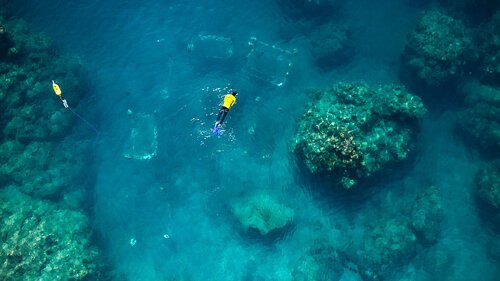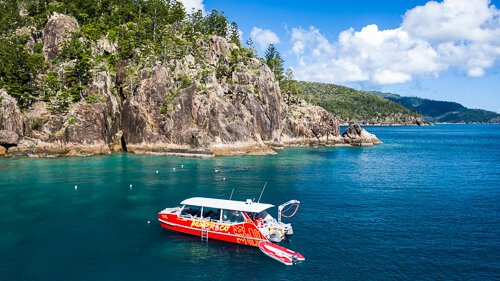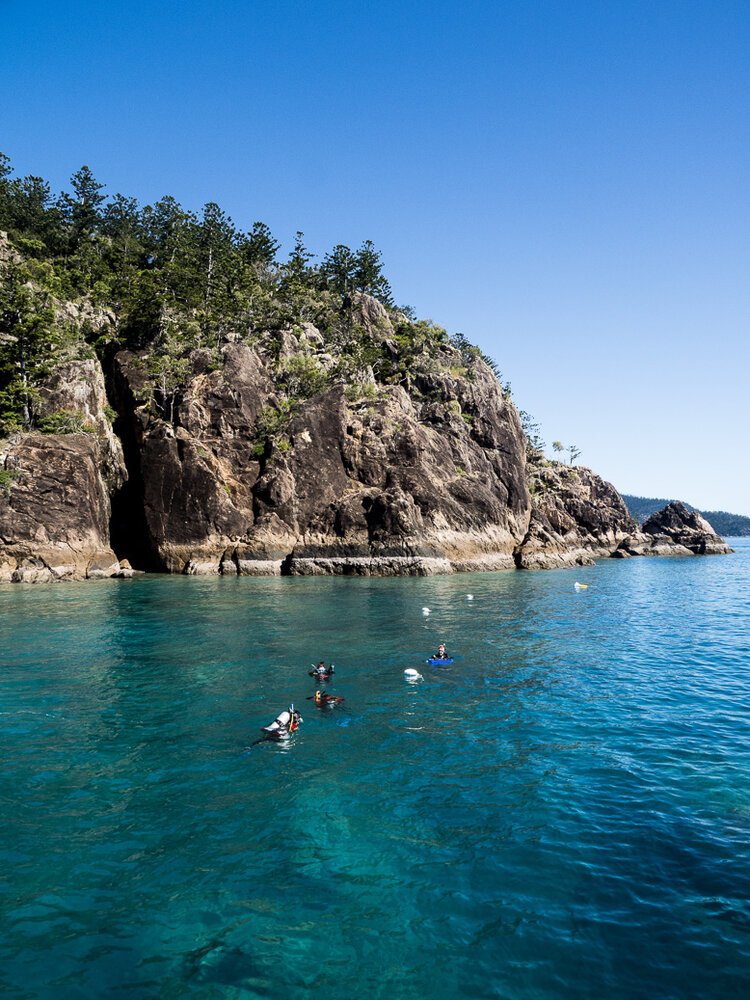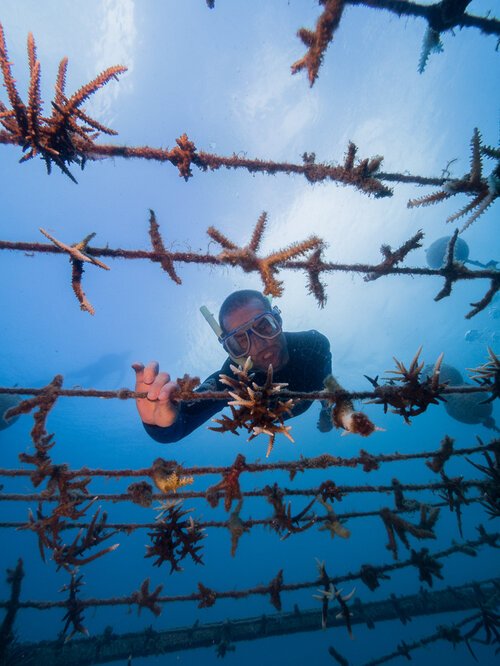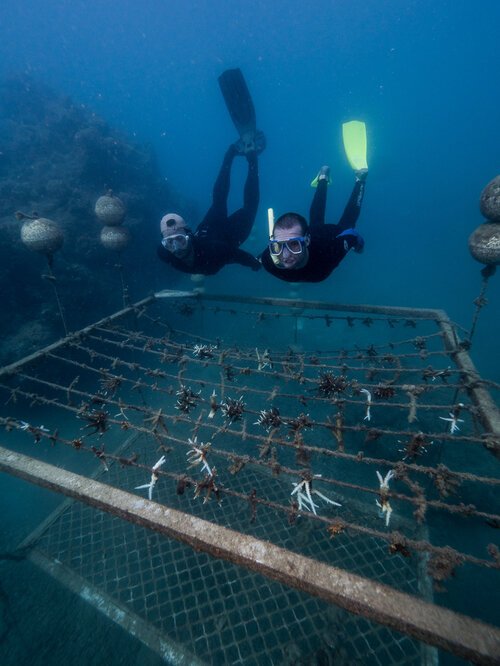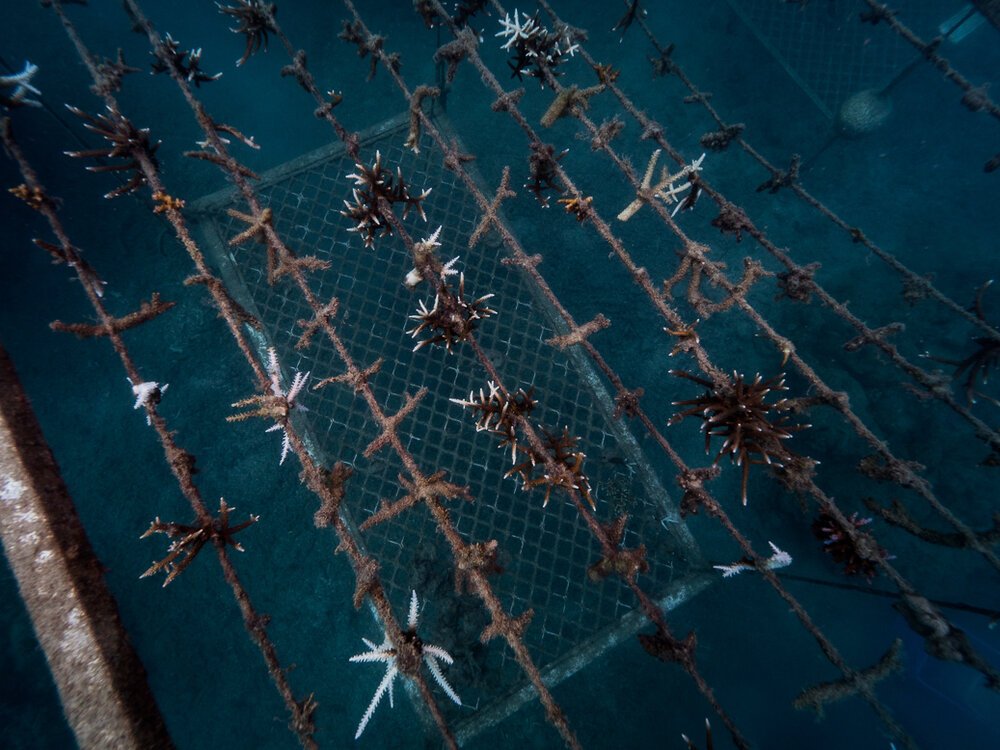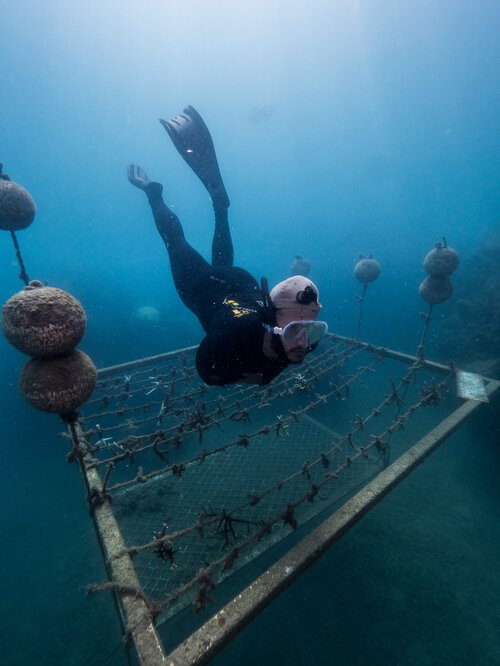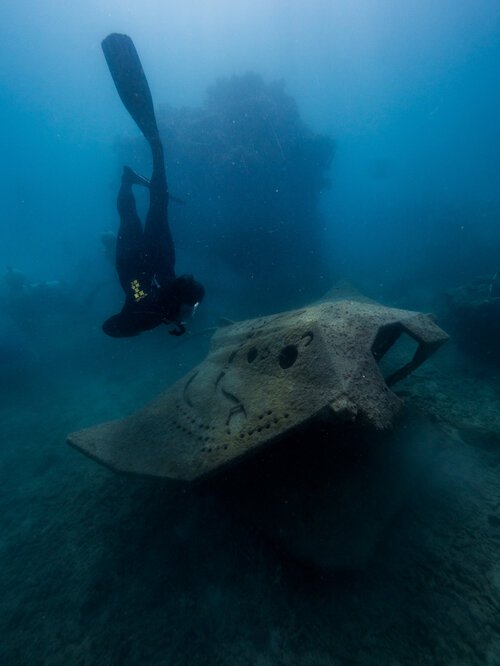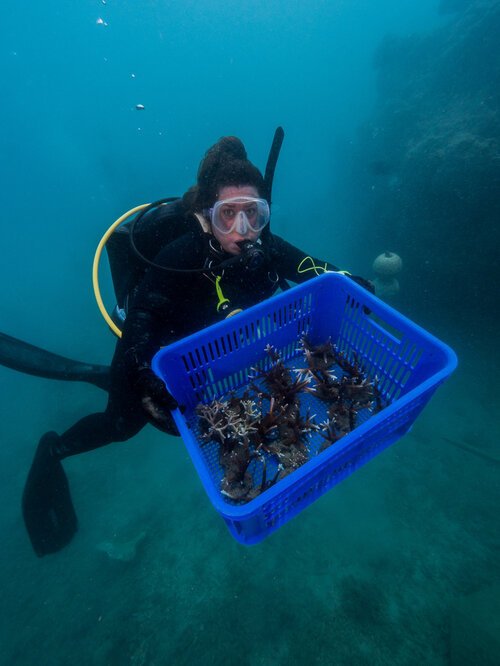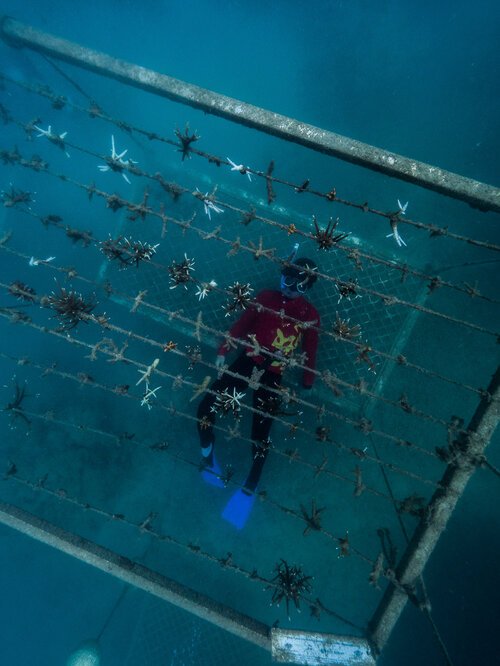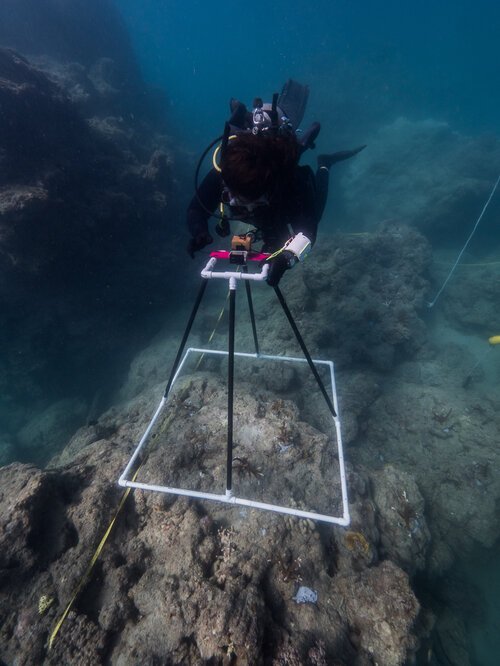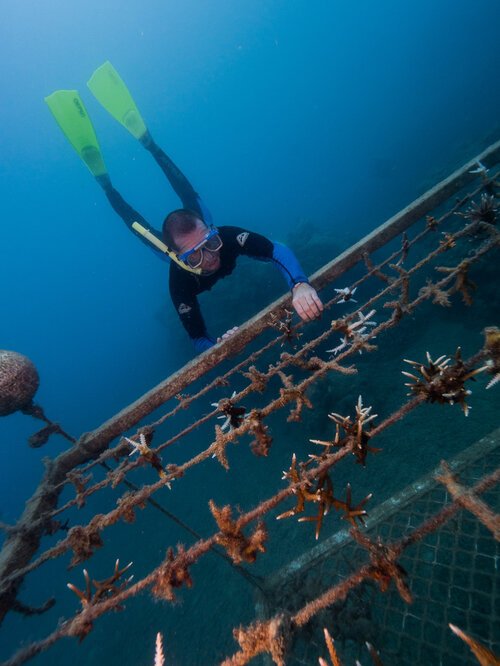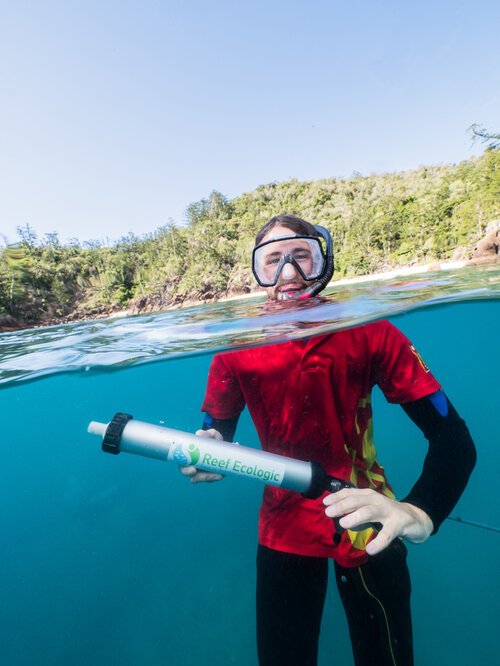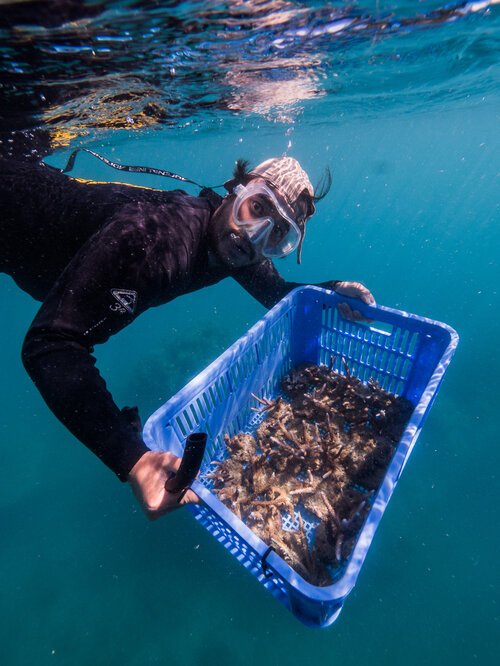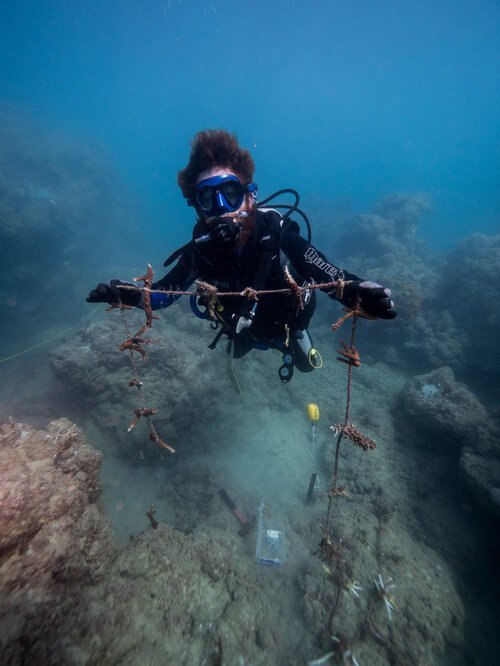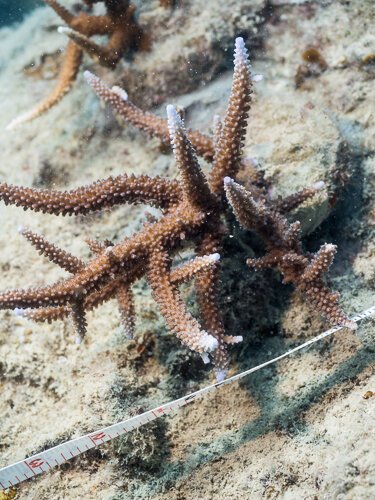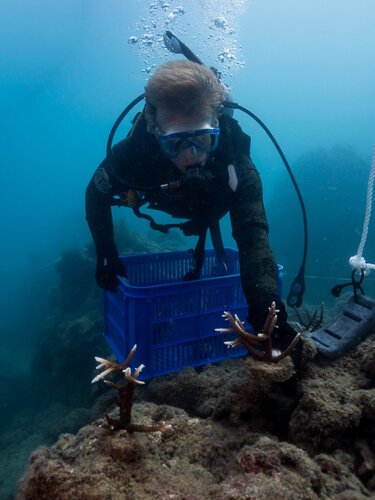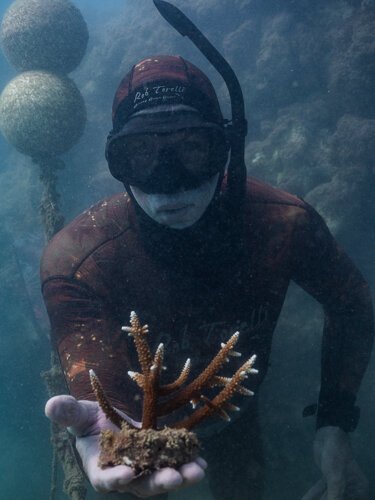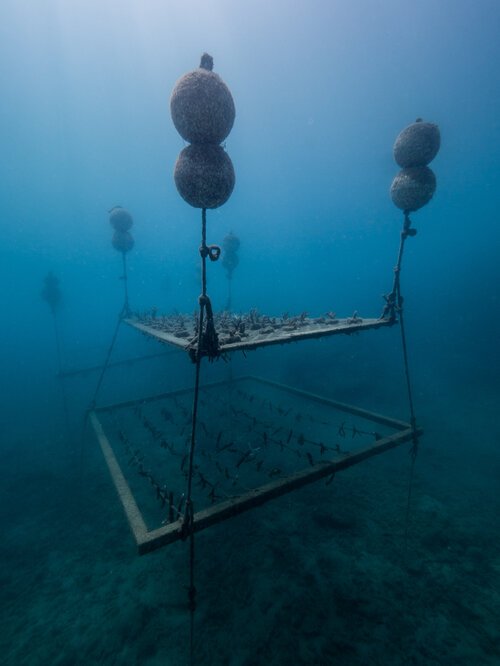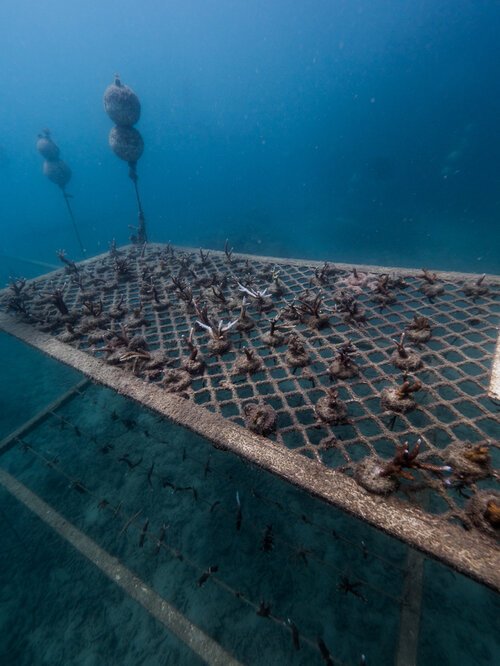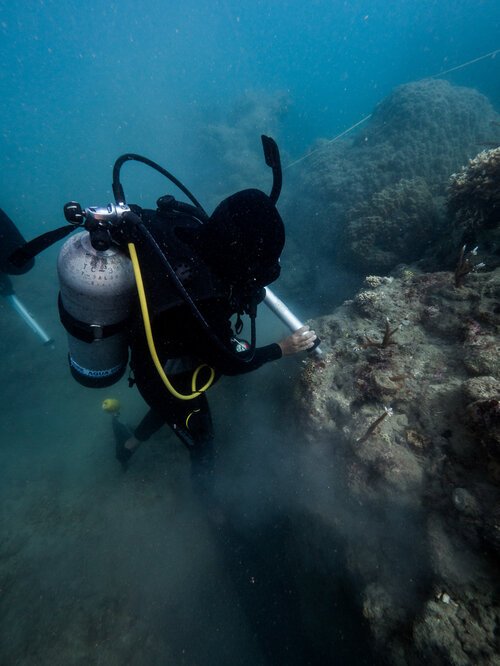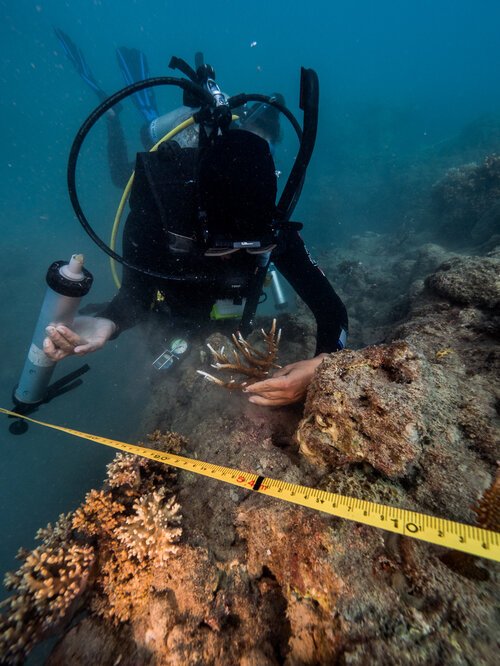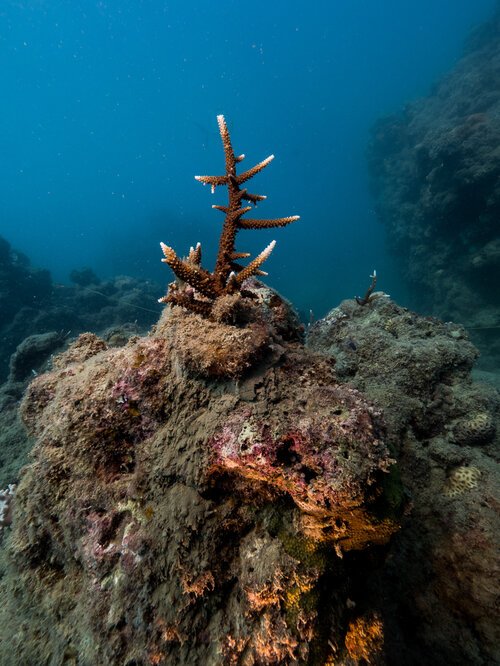From guides to gardeners: how these tour operators are replanting the Whitsunday's coral reefs
I strap my fins on and get ready to jump into the sparkling turquoise water of Whitsunday’s Manta Ray Bay. Bright blue and yellow fusiliers and an enormous humphead wrasse affectionately nicknamed George circle below, coming close to inspect the boat curiously. Since COVID-19 put the tourism industry on hold, it’s been a while since these friendly fish had any visitors.
I’m out with Reef Ecologic, a team of marine scientists who develop innovative ways to preserve coral reefs and build the resilience of these spectacular marine ecosystems.“It’s going to look pretty different from what you remember” marine scientist Gemma Molinaro warns me. It has been eight years since I left the Whitsundays, the place where I became a dive instructor. Back then, Manta Ray Bay was the jewel of the area, filled with vibrant coral and marine life.
I leap off the boat, and underwater the view is a stark contrast to my colourful memories of the bay—silty sediment carpets what was once bommies covered in coral. More resilient coral species remain, but the reefs original diversity is gone. In 2017, Cyclone Debbie tore through the Whitsundays, decimating some of the most popular dive and snorkel sites in the Whitsunday Islands. Strong winds up to 250km an hour, and seas up to 12 metres devastated the prime tourism sites on the north side of Hook and Hamilton Island.
A couple of months after Cyclone Debbie, Reef Ecologic surveyed the reefs surrounding these islands. A grim sight greeted the team. In Manta Ray Bay, massive coral bommies were overturned, and the live coral cover had almost wholly disappeared.
Reef Ecologic started a discussion with the tourism industry, who rely heavily on a healthy reef to show their visitors. “Post-cyclone Debbie, that experience [for tourists] was not good. Underwater, tourists were disappointed, and we said ‘what can we collectively do to help the reef and the tourism experience?” Reef Ecologic’s Director, Adam Smith, explains.
The team developed the ‘Whitsundays Public Art and Reef Restoration Project’ which involved installing an underwater sculpture trail and restoring the reef in places like Manta Ray Bay. A little coral gardening is what we are here to do today, with some help from a band of dedicated local tour guides.
Tour guides turned citizen scientists
The tourism industry was one of the hardest hit by COVID-19, with most boats unable to operate and tour guides stood down. Reef Ecologic saw this as an opportunity to engage the local community with the work happening in their blue backyard. Over 20 tour guides from Red Cat Adventures, Ocean Rafting and Daydream Island have become citizen scientists for the day, working with the team from Reef Ecologic to survey fish life and plant coral.
“Often scientists just work alone, but to amplify your message and create champions you’ve got to go on a journey with people,” Adam says. Tour guides are the eyes on the reef. They’re our there every day and can check on how the freshly planted corals are going. “The local community and tourism operators are out there every day, they are showing this beautiful part of the world to all the tourists and visitors, and they are the ones who can share the message and impact of the coral nurseries as they progress over time”. Gemma explains.
Marine scientist Nathan Cook kicks off the day with a snorkel over the coral nurseries Reef Ecologic set up in Manta Ray Bay in early 2019. The tour guides are assigned roles, and the day runs like a well-oiled machine. A team of divers remove coral from the nurseries for planting. Above water, another team mixes and fills guns with concrete. Snorkellers swim between the nursery and planting sites, delivering crates of coral and cement guns.
Adam explains that replanting coral can be simple. “It’s like gardening underwater, where you collect a bit of coral, and you grow it in a nursery and then when it is large enough and healthy enough, you plant it back on the reef. It can be as simple as just putting it in a hole. We were after a bit more security so we had the coral on small concrete disks and we cemented that to the bottom, so it’s got a much better chance of being there growing and thriving.”
But will these freshly planted corals flourish or fail? “A global literature review has recently measured the success rate of coral reef restoration, and it’s pretty good - 60-80% of corals survive replanting after a year,” Adam says.
Creating coral champions
We protect what we love, and it is clear how much the tour guides love this bay. Jack Berger, a deckhand from Red Cat Adventures, tells me that, “Manta Ray Bay is special for so many reasons. The fish life is so diverse. From the hump-head Maori wrasse to the tiny little yellow fusiliers.”
Nathan Cook believes in the power of residents like Jack to help champion the protection of the reef. “We need people to take ownership of their patch of reef. Reef restoration projects like these are small scale, and one of the most powerful aspects of it is not the ecological effects that we have by planting and regrowing coral but empowering people,” he says.
“In the modern era, you need champions, you need legends, and it’s all about communicate, communicate, communicate. To communicate what you’re doing, you have to show people. You have to get them underwater. It is brilliant seeing these volunteers work with us and pointing out the fish they know and looking at their favourite bommies and seeing us collectively heal them and help them.” Adam tells me.
“The Great Barrier Reef is one of the most incredible organisms on the planet. Being part of projects like this makes you feel incredible, it makes you feel like you’ve helped it makes you feel involved and like there’s hope.”
- Amelia Keynes, Daydream Island
Climate change is a behemoth issue, and to combat its impacts on coral reefs, we need to tackle the problem in multiple ways. First and foremost, we need to reduce our carbon footprint, and the team is realistic about coral restoration’s role in climate action.
“These projects are not a panacea for declining reef health. We can improve the situation in small locations like Manta Ray Bay, but the real change is going to come from implementing broad-scale widespread change on a planetary level as a global community, to mitigate climate change and those ongoing threats that are going to damage all ecosystems.” Nathan explains.
‘We’re restoring the reef, we’re attracting the tourists. As a scientist, it’s also a good news story; we’re pioneering different techniques in an area of the marine park that this research hasn’t been done before.” Adam says. After two days of coral gardening in Manta Ray Bay, 600 corals were planted. Ultimately, this is a good news story, amongst a whole lot of bad news stories.

